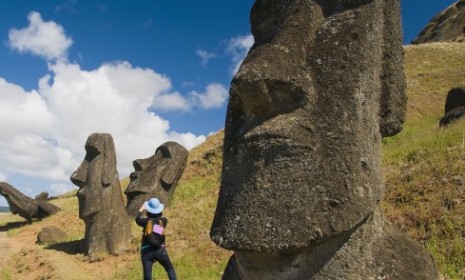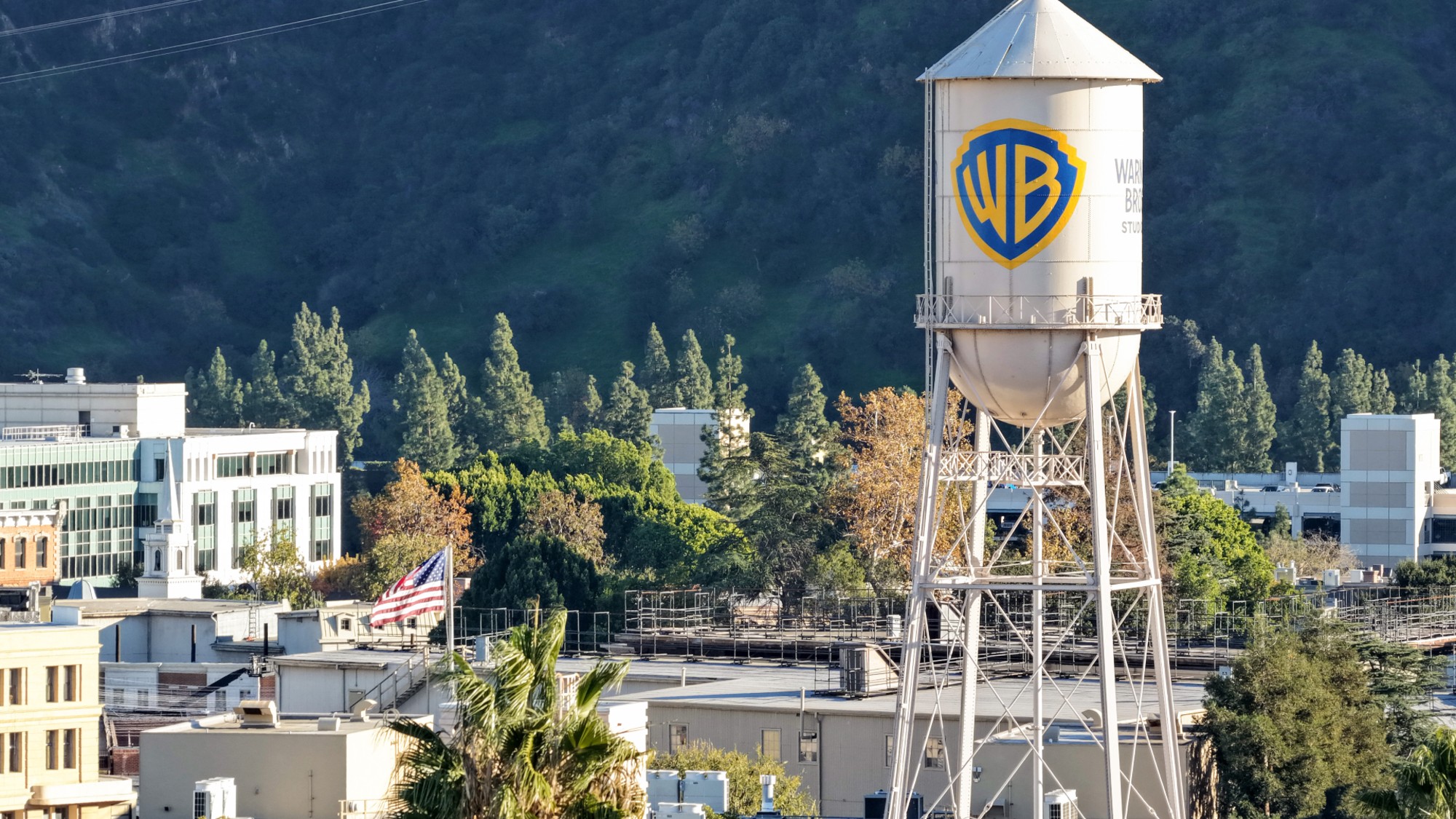Easter Island: Mystery solved?
The (seemingly) random placement of Easter Island's giant heads has stumped experts, but — thanks to high-tech research — the pieces are falling into place

A team of British archaeologists have upended 50 years of conventional wisdom about the giant stone heads, or moai, that litter Chile's Easter Island. The sternly watchful, massive stone figures — sculpted and somehow moved by Polynesian inhabitants hundreds of years ago — are a huge tourist draw and a persistent mystery, one which the British team claims to have (at least partially) solved. (Watch a National Geographic report about Easter Island's mystery)
What is the crux of the puzzle?
The curious placement of the statues. Roughly half of the 1,000 moai were transported from the quarry in the island's center where they were sculpted, most to the edge of the island where they sit on special platforms, facing inland. The rest are scattered, inexplicably, along an ancient network of roads leading to a sacred volcano site, Rano Raraku.
The Week
Escape your echo chamber. Get the facts behind the news, plus analysis from multiple perspectives.

Sign up for The Week's Free Newsletters
From our morning news briefing to a weekly Good News Newsletter, get the best of The Week delivered directly to your inbox.
From our morning news briefing to a weekly Good News Newsletter, get the best of The Week delivered directly to your inbox.
What's the old theory?
In 1958, Norwegian adventurer Thor Heyerdahl proposed that the roads had been built primarily to transport the moai from the quarry to the coast, and that those laying alongside the roads were broken or defective statues abandoned en route.
What's the new theory?
Essentially that an earlier theory that the roads themselves had ceremonial import — proposed by British archaeologist Katherine Routledge in 1914 — was right. Using high-tech equipment, the new batch of archaeologists, from University College London and Manchester University, say they've established that the roadside statues also sat on special platforms. These moai, they've noted, are situated more frequently as the roads near the volcano, suggesting a processional route to a holy site. "Volcano cones were considered as points of entry to the underworld and mythical origin land Hawaiki," says Manchester University researcher Colin Richards. Each head is believed to represent a deceased ancestor.
A free daily email with the biggest news stories of the day – and the best features from TheWeek.com
What don't we know still?
One of the greatest mysteries: How the ancient Polynesians moved the moai at all. The giant statues weigh up to 86 tons, and the tallest rises over 30 feet. The roads, the researchers note, are concave, making transporting heavy objects even more of a challenge. Though legend has it that a king was able to make the statues walk, using divine power, "the truth," says Richards, is that "we will never know."
Sources: The Independent, CBC News, Wikipedia (2), Before It's News
-
 Trump unveils $12B bailout for tariff-hit farmers
Trump unveils $12B bailout for tariff-hit farmersSpeed Read The president continues to insist that his tariff policy is working
-
 Paramount fights Netflix for Warner as Trump hovers
Paramount fights Netflix for Warner as Trump hoversSpeed Read Paramount Skydance is seeking to undo Netflix’s purchase of Warner Bros. Discovery
-
 How will the Warner Bros. bidding war affect the entertainment industry?
How will the Warner Bros. bidding war affect the entertainment industry?Today’s Big Question Both Netflix and Paramount are trying to purchase the company